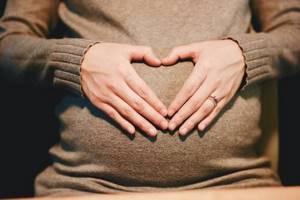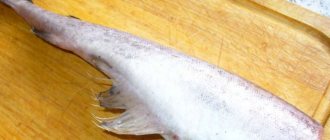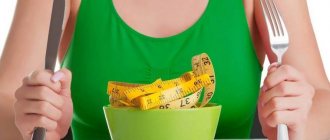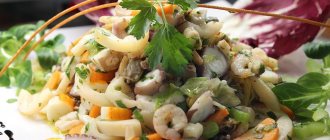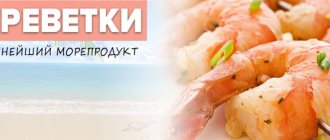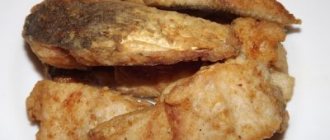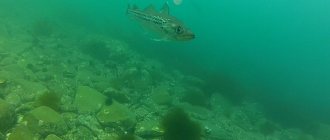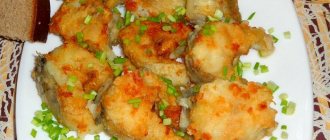How to lose weight if there are so many goodies around? Easily! Cook them for weight loss and enjoy delicious dishes.
Eating your favorite foods and not gaining weight is the dream of every girl who is not blessed with an accelerated metabolism, which allows her to absorb any food in large quantities. In order not to expose your body to stress due to a strict diet, you can choose a method that allows you to eat your favorite foods. For those who are looking for a way to get rid of extra pounds based on goodies, a diet where the main ingredient is seafood is perfect. The diet recipe is simple, anyone can apply it on themselves.
Seafood diet. Principles
The peculiarity of losing weight on fish and seafood is that there is no clearly regulated menu. Anyone who wants to lose weight can independently create their own diet for the entire diet period and come up with new recipes.
The menu should include not only seafood, but also low-calorie fruits and vegetables, cereals and dairy products.
A balanced diet will not allow the body to become depleted, providing it with all the necessary components for the proper functioning of all organs. At the same time, a person losing weight will not feel hungry, which means there will be no breakdowns in eating unhealthy foods, and the method will be brought to completion.
A seafood diet requires adherence to the following principles:
- You need to eat 5-6 times a day in small portions. This principle allows you to quickly digest food without overloading the gastrointestinal tract, as a result of which fat deposits do not form. At the same time, a person losing weight does not starve, since little time passes between meals.
- It is better to eat carbohydrate foods for breakfast, since this way you can recharge your energy for the whole day. Moreover, carbohydrates must be complex, that is, long digestible, then glucose will be released gradually, without forming excess, which then turns into fat.
- It is advisable to include at least a glass of low-fat fermented milk drink in your menu every day. Kefir, fermented baked milk and yogurt help improve digestion; they are especially useful as a second dinner.
- If you plan to extend the diet for a long time, then the diet must be diversified with lean varieties of meat - veal and beef. It is also advisable to eat skinless chicken.
- Instead of sunflower oil, it is better to use olive, flaxseed or coconut oil for dressing vegetable salads. Animal fats, including butter, should be completely excluded from the diet.
- All dishes are prepared without salt and sugar, as they stimulate appetite and cause swelling and fat deposits. To prevent the fish from seeming bland, you can add herbal spices and lemon juice to it, and you can eat porridge with fruits and berries.
conclusions
There are few diets that allow you to lose weight without harm to the body and constant feeling of hunger. Marine techniques belong specifically to this group. The changed principle of nutrition allows you not only to lose extra pounds, but also to saturate your body with the substances that it needs to function properly.
Reader’s story “How I lost 18 kg in 2.5 months” I’ve been fat all my life and suffered from excess weight. In clothing stores I chose size L, which by the age of 25 turned into XL and continued to grow. I can tell you for a long time how I tried to fight my 30-35 extra pounds: diets, hunger strike, physical activity, even pills and some kind of conspiracies. The effect was short-lived or absent altogether. In short, despair, depression and almost resignation to one’s enormous weight. But one day I came across... a chocolate bar that helps you lose weight! It didn’t cost me anything to try it - I love chocolates. I ordered it and ate it. And the weight crept down!! It seems like mysticism, but it's true. I began to study the issue and realized how it all works. Girls, try it! I have already lost 18 kg in 2.5 months. And I continue. It's up to you, but you don't lose anything except weight, of course. Try Choco Burn chocolate for weight loss for 147 rubles.
Protein diet seafood. Recipes for a protein diet: soups
Text: Polina Soshka
Photo: TS/Fotobank.ru
Recipes for protein dishes, including soup recipes, are especially popular these days. Inspired by the example of many stars of show business, cinema and politics, who quickly and effectively lose weight on protein diets, people all over the world are interested in what dishes can constitute a daily diet on a protein diet. In particular, what soups can you afford during lunch without going beyond the protein diet?
Even in the most strict, initial period of a protein diet, you can and should prepare soups. Their basis is any meat or fish product, seafood or soy. Eggs, onions, garlic, dill, and most spices are most often chosen as additional ingredients.
1 of 1
The first is No. 1 on any diet.
At first glance, it may seem that preparing soups as part of a protein diet is almost impossible. After all, traditionally, soup (except vegetarian) is a combination of a protein base (broth of meat, poultry, fish, seafood, etc.) with a carbohydrate dressing (various vegetables, cereals, pasta or noodles, etc.). Meanwhile, liquid food promotes weight loss, and with any diet, liquid meals are most welcome. How to prepare soup for a protein diet, excluding most of the usual vegetables and cereals? Quite simple actually!
The greatest difficulties, perhaps, can be encountered at the most strict, initial stage of any protein diet - most often this is the first 2-3 weeks, when the diet consists of 99% protein dishes and products.
For example, in the Dukan diet this phase is called “Attack”. At this time, the only soup you can use is broth prepared, for example, with meat, turkey, chicken or fish, which is seasoned with boiled egg, tofu, parsley and onion. But in reality, isn’t this a delicious soup? Meanwhile, the recipe for such a soup does not go beyond even the most strict protein diet.
However, it is worth recognizing: more varied first courses can be prepared starting from the second phase of the protein diet (in Dukan, for example, it is called “Cruise”), when some vegetables are already allowed in the diet. For example:
- artichokes, pumpkin, eggplant
- broccoli and any kind of cabbage
- carrot
- sweet pepper, redi, turnip
- leaf salads
- green beans and spinach
Soup recipes for a protein diet
Spinach cream soup.
Ingredients: Turkey breast or drumstick without skin, 1 package of spinach (frozen can be used), 2 cloves of garlic, any herbs as desired, a third of a glass of skim milk, salt, pepper.
Preparation: Boil the turkey, remove the meat from the broth and let it cool. Chop the spinach finely and cook in the prepared broth for about 5 minutes. Disassemble the turkey meat, separate it from bones and veins, chop it finely and return it back to the broth. Cook the spinach and turkey together for a couple more minutes. Let the resulting “mush” cool slightly, then use a blender to turn it into a puree, gradually adding milk, spices and finely chopped herbs to the soup. It is better to serve immediately; if you reheat the soup, it may lose its puree-like consistency.
Fish soup “Salmon with milk”.
Ingredients: 450 g salmon fillet, 3-4 medium-sized tomatoes, 1 onion, 1 carrot, half a liter of skim milk, any herbs if desired, salt, pepper.
Preparation: Pour boiling water over the tomatoes, peel them and chop them finely. Peel the onion and also finely chop. Grate the carrots. Fry the carrots and onions in a non-stick frying pan and add the tomatoes a little later. Place in a saucepan, add 1 liter of water and bring to a boil. Next, cook the vegetables over low heat for about 6-8 minutes. Cut the salmon into small cubes and add to the broth. After a couple of minutes, add milk. After 5 minutes, add spices and herbs and turn off. Let it brew for 15-20 minutes.
Oriental pink salmon soup with egg.
This soup recipe for a protein diet is suitable even for the most strict initial stage of weight loss (such as “Attack” in the Dukan protein diet), as it contains only approved foods.
Ingredients: 1 onion, 1 can of pink salmon in its own juice, 2-3 chicken eggs, tofu cottage cheese or soft cottage cheese 0% fat, a sprig of dill, salt, pepper.
Preparation: Peel the onion and, without cutting, place in a saucepan with 1 liter of water, boil. After 5-7 minutes, remove the onion and put the pink salmon, mashed with a fork, into the broth. In a separate bowl, beat the eggs with a whisk, then slowly pour them into the broth with the fish, stirring constantly - you should get a kind of “curly egg clouds”, which can often be found in Japanese and Chinese dishes. Then, if desired, you can add tofu cut into small pieces into the soup. At the end, you can add a little dill, pepper and salt to the soup. If you did without tofu, then immediately after consumption you can add 1 tbsp to a plate of soup. low-fat soft cottage cheese - it will play the role of sour cream, but will not break the protein monopoly of the recipe.
Please note that instead of pink salmon in this recipe, you can use any other protein base - meat, game, seafood, fish.
Reviews
Regina, 33 years old, Stavropol: “I’ve liked seafood since childhood, so the diet suited everything. The first day is difficult without tasty, sweet and salty foods, but over time you get used to low-calorie foods. Before the resort I lost 3.5 kg in 3 days. My health was not affected."
Anna, 45 years old, Krasnodar: “I gained weight due to my craving for sweets. I chose a gentle way to lose weight using seafood. The effect is minimal, but without harm to health. Lost 2 kg in a week.”
Fasting day on seafood. Fish fasting day
Fish fasting day
If you are intolerant to dairy products, instead of a milk, kefir or cottage cheese day, you can spend another protein fasting day - a fish one.
Fish meat has high nutritional value with very low calorie content:
100-200 kcal per 100 g. This is an ideal product for a balanced diet. The number of edible parts of fish far exceeds the inedible ones. Its meat is well absorbed by the human body, which is largely facilitated by its specific taste and aroma. In this regard, it is especially recommended as a staple product for elderly, sick and overweight people. In addition, it is quickly digested even with reduced secretion of the digestive organs.
The protein content in fish is 15–20%. There is especially a lot of it in the meat of oceanic fish. Its digestibility by the human body is very high - 93–98%.
Fish oil has high biological activity due to its high content of vitamin F. This vitamin normalizes fat and cholesterol metabolism, thereby reducing the amount of cholesterol in the blood. Most of it is found in the fat of fish caught in northern waters.
There are few carbohydrates in fish - only 0.5-1%, and they are represented mainly by muscle starch (glycogen) and its hydrolysis products. One of these products is glucose, which gives fish broth a pleasant sweetish taste.
The proportion of minerals in fish is 1–2%, but this is enough to ensure normal metabolism. The most important microelements for humans are phosphorus, calcium, magnesium, iron, potassium, sodium, chlorine and sulfur. Most of them are found in the meat of sea fish.
Almost all fish tissues contain vitamins. These are fat-soluble A, D, E, K and water-soluble B vitamins. However, fish oil and liver are the real storehouse of vitamins. The water content in fish ranges from 55 to 83%: the fatter it is, the less water there is in its tissues.
A fish fasting day is tolerated quite easily due to the large volume of food consumed. You can repeat it 1-2 times a week.
Option 1.
Ingredients:
Lean fish - 650 g, salt.
Boil the fish (preferably steamed) with a minimum amount of salt and eat throughout the day, dividing into 6 meals.
Drink at least 2 liters of water during the day.
Option 2.
Ingredients:
Low-fat fish (cod, hake, pollock, bream, perch, pike, pike perch) - 400 g, unsweetened tea -500-750 ml, rosehip decoction (or compote of apples or dried fruits) - 250 ml.
Boil the fish (preferably steamed) with a minimum amount of salt and eat throughout the day, dividing into 6 meals.
Along with water (at least 1 liter), drink unsweetened tea and a decoction of rose hips.
Option 3.
Ingredients:
Lean fish (cod or pike perch) - 400 g, vegetable salad (cabbage, carrots, cucumbers, tomatoes) - 500 g.
Boil the fish in lightly salted water and eat it with a vegetable salad, dividing into 4 portions.
You can drink unlimited quantities of boiled or mineral water, as well as freshly squeezed juices without sugar.
Option 4.
Ingredients:
Lean fish (sea fish) - 500 g, vegetable salad (cabbage, cucumbers, tomatoes), unsweetened tea, coffee with lemon or rosehip decoction - 500 ml.
Divide the fish into 5 portions and eat throughout the day along with a vegetable salad. For breakfast and lunch, instead of water, you can drink a glass of tea, coffee or rosehip decoction.
This text is an introductory fragment.
Composition and calorie content of seafood
The meat of crabs is suitable for dietary nutrition . There are no carbohydrates in 100 g of product, there are 1–2 g of fat and 16–19 g of protein. Crustaceans are a source of zinc and copper, which help boost the body's immune defenses and give the body strength. The presence of phosphorus helps strengthen the nervous and skeletal systems. On average, 100 g of product contains about 90 kcal. For first and second courses, in most cases, decapod crustacean marine inhabitants are used, which ensure the effectiveness of the diet.
Seafood
In the food industry, seafood refers to all edible representatives of sea waters. Although fish is a marine life, it is not classified as seafood, but is taken into account as an independent group. Most types of seafood are rich in vitamins and microelements that are beneficial for the human body (caloriator). People have learned to use sea inhabitants not only for culinary purposes, but in the chemical and medical industries.
Currently, a large number of types of seafood are known. Let's highlight the most common, popular and large groups, which include:
- bivalve molluscs (oysters, mussels, scallops);
- crustaceans (shrimp, crayfish, crabs, lobsters, lobsters, krill);
- seaweed (red, green and brown);
- cephalopods (octopus and squid);
- echinoderms (sea cucumber, cucumaria and sea cucumber).
Calorie content of seafood
The calorie content of an inhabitant of sea waters directly depends on the chemical composition and, of course, the type of seafood. For example, only three grams of fat is contained in mussel meat, and the chemical composition of squid and shrimp contains even less fat. All types of seafood can be classified as low-calorie and dietary foods. If we calculate the average calorie content of all seafood, then this figure will not exceed 90 kcal per 100 grams of product.
Composition of seafood
Depending on the type of inhabitant of sea waters, the beneficial properties and biochemical composition of seafood vary. For example, the meat of the most popular seafood, shrimp, is rich in the following beneficial microelements: iron, calcium, sulfur, magnesium and phosphorus. Octopus and squid meat is enriched with large amounts of vitamins B and C. Useful micro-, macroelements and a large number of vitamins, which are part of most seafood, are very important and indispensable for human health.
Useful properties of seafood
The beneficial properties that seafood is rich in have a good effect on the entire human body. It is worth noting that the inhabitants of sea waters have the greatest beneficial effect on the cardiovascular system; this fact is due to the presence of Omega-3 and Omega-6 polyunsaturated fatty acids in seafood.
Seafood also has a beneficial effect on the digestive system, cholesterol levels and metabolic processes in the body. Representatives of the deep sea contain a large amount of natural protein, which saturates a person well and is easily digestible.
Seafood has unique properties that support the functioning of the thyroid gland. Iodine and iron compounds contained in almost all types of seafood have a beneficial effect on the functioning of the human brain. People who eat seafood are less susceptible to depression and stress (calorizer). Seafood is very healthy and at the same time very tasty, so you should include it in your daily diet as often as possible.
The benefits of seafood
Seafood contains proteins and Omega-3 fatty acids. This type of food saturates the body with phosphorus, copper, iodine, zinc, calcium and many other important trace elements. A diet based on sea food helps normalize metabolic processes, increase vitality and is a preventative against joint diseases. Before making changes to your daily diet, you must ensure that you are not allergic to the product.
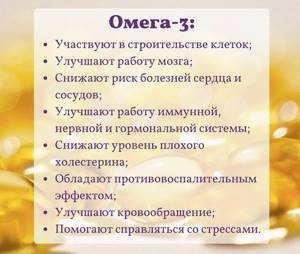
What are the risks?
The fish diet is characterized by high benefits, but the consumption of seafood must be approached with great care. Thus, the component is an allergen and can cause a severe allergic reaction in persons intolerant to the ingredient. However, the danger lies not only in this:
- Often fish contain parasites. You can get rid of them if you buy food not in local stalls, but in reputable supermarkets;
- Despite the absence of contraindications to consuming frozen products, preference should be given to the fresh variety. This recommendation is due to the dishonesty of sellers who freeze them to disguise missing animals;
- When choosing a carcass, you need to carefully visually examine and smell it. Fish is considered fresh if: there is no specific fishy smell, the eyes are clean without cloudy spots, the color of the gills is pinkish with a red tint, there is no mucous discharge - all this indicates that the seafood can be purchased without fear;
- raw fish is actively used in various sushi and rolls, but this fact does not indicate that a fish diet can be based on such dishes. On the contrary, the dish must be heat-treated, which eliminates the risk of diseases due to parasites.
Another rule is to avoid smoked fish. Despite the pleasant taste, the product contains a lot of carcinogens that appear due to the use of liquid house.
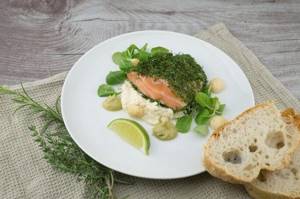
Octopus salad
You need to purchase: 250 g of boiled octopus meat, red and green bell peppers (half each), 1 large tomato, half an onion, 12 black olives, 2 tbsp wine vinegar, 5-6 tbsp olive oil. , parsley, salt, pepper. The octopus meat needs to be cut into pieces, the peppers and tomatoes into cubes, and the onion finely chopped. Place everything in a salad bowl. To make the dressing, whisk olive oil with vinegar, chopped parsley, salt and ground pepper. Season the salad, mix thoroughly and finally garnish with olives. You can also add boiled shrimp to this salad.
Carefully!
Pregnant and lactating women should avoid a fish diet, as the mercury contained in some varieties of seafood can be harmful to health. If you are allergic to seafood or any products accompanying the menu, you should avoid it.
In addition, nutritionists note that women, a couple of days after starting to lose weight using the fish system, feel tired, weak, headaches and other unpleasant sensations.
In each individual case, the cause of the malaise is different: low-quality products, an excess of omega-6 and other elements. In any case, if you notice even a slight discomfort, you should stop the diet.
